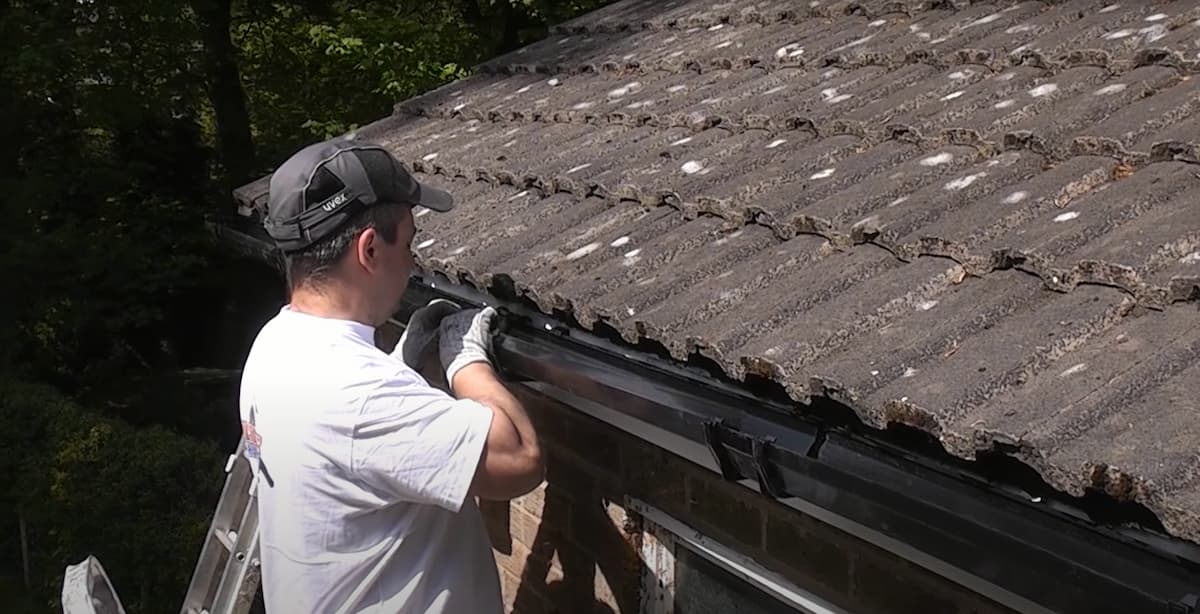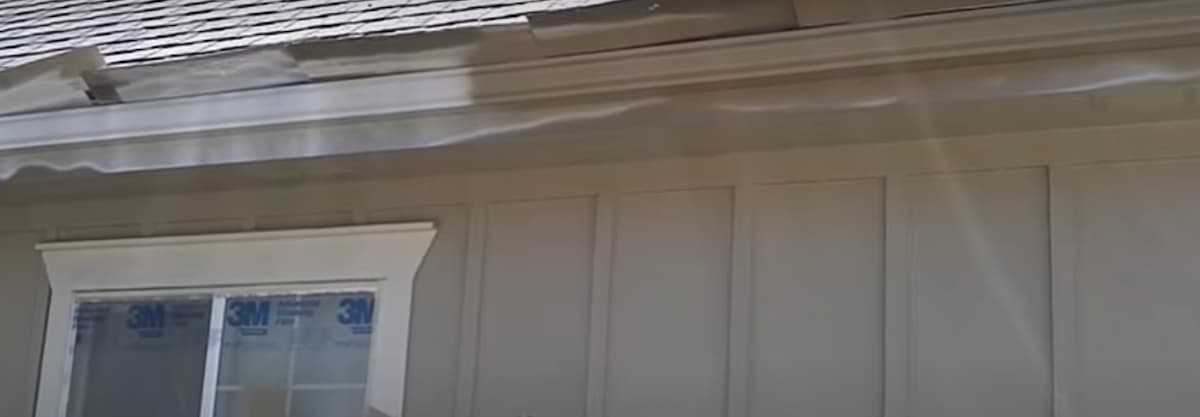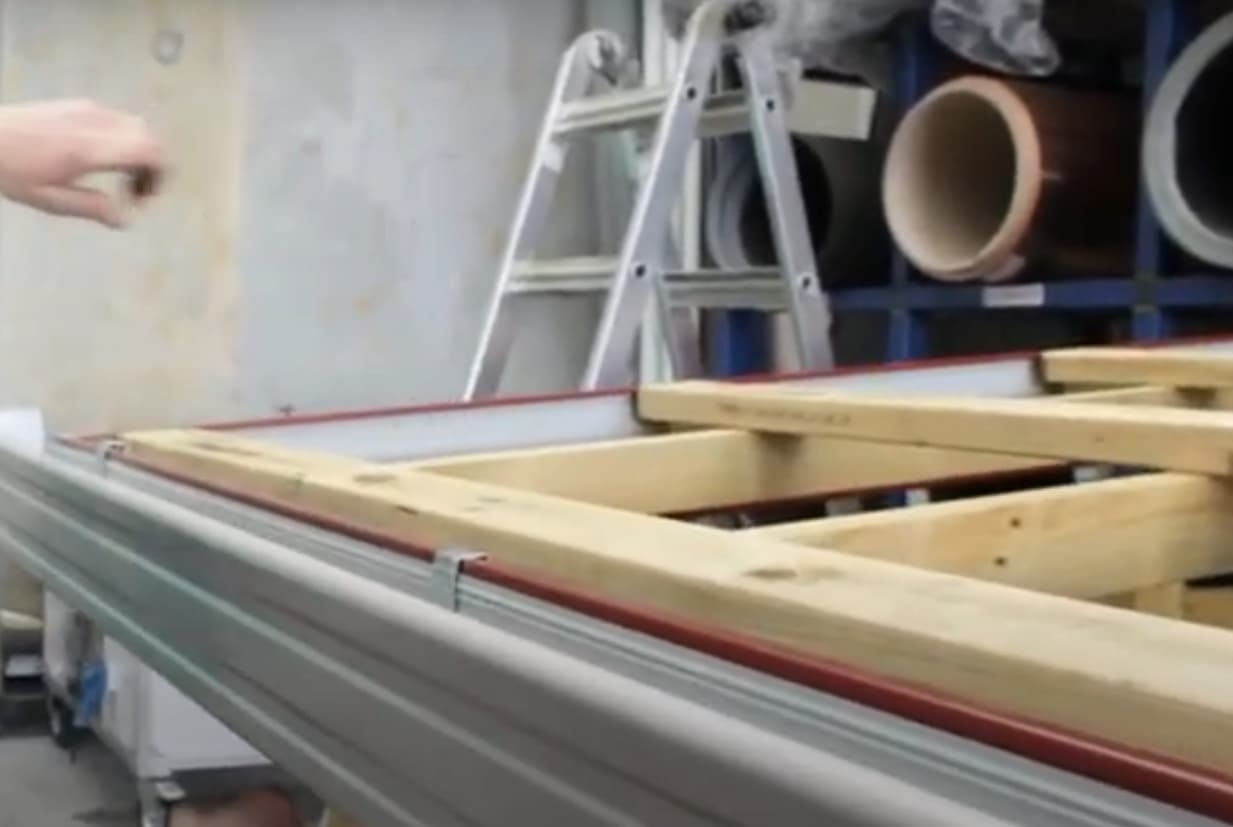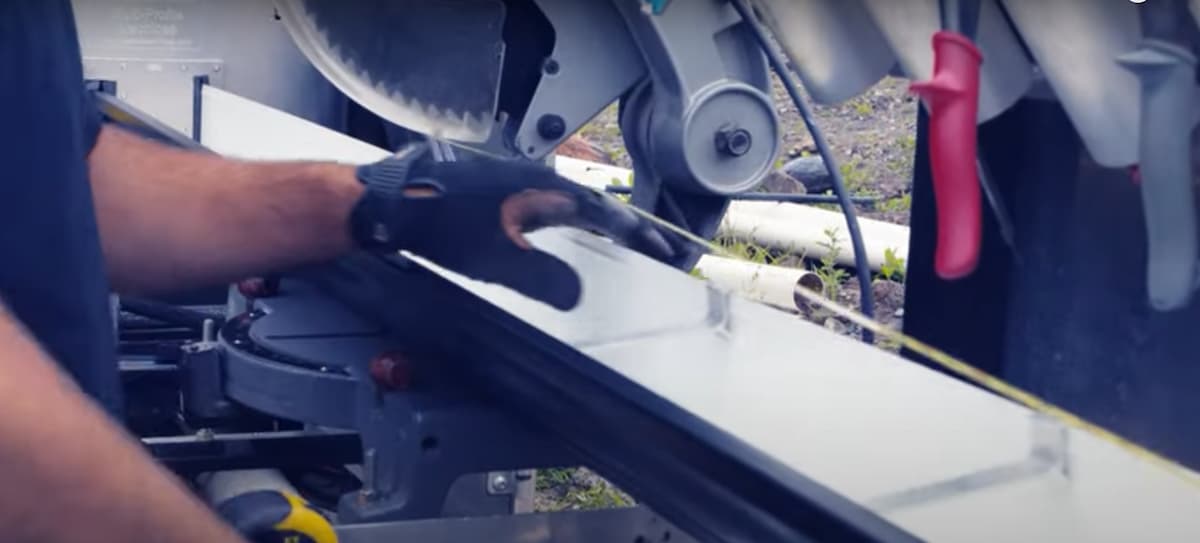
Can you choose what’s best for your roof? Pick one, the other or both roofing choices for your home.
Using gutters improves roof drainage but using (or installing) fascia prevents debris from entering the gutter. We’ve all seen roofs with gutters that are choked with leaves, sticks and even small animals. People want to prevent this but still use gutters. So what’s the solution?
Gutters are very effective at carrying away rainfall, but they will only work if they are not blocked by debris. Installing one continuous 2-inch wide trough along the eaves of a house does several things. It will contain most leaves and other large pieces of organic matter. It also will direct rainwater away from the structure. The only drawback is that the gutter will eventually fill with organic debris that decomposes, turns to mush and falls into the trough. This can be prevented by installing a mesh, metal or plastic grid inside the trough. These grids are available at home centres, hardware stores and lumberyards.
What is a Gutter?
A roof gutter is a trough installed along the eaves of a house to channel rainwater away from the structure. In most parts of the country, straight gutters are made from wood or metal. In snowy climates, gutter corners have to be protected from ice damming. So snow gutters are often made with valleys, which prevent ice dams.
Wooden Gutters
These are installed using hangers nailed to the wall of the house.
Metal Gutters
These are installed with hangers, but they have to be screwed or bolted to the building.
The Downspout
Connects the gutter to the drainpipe so rainwater can flow away from the house.
Roof Gutters
A straight gutter is most effective, but a V-shaped gutter is better for directing snow away from the eaves.
Metal grids inside the gutter help prevent organic debris from clogging gutters.
Metal or plastic screens inside the gutter prevent leaves and other debris from entering the gutter.
Installing gutters and leaving them bare is a mistake, especially with organic debris like leaves and needles. Wooden gutters are especially prone to blockage. If you use them, install a wire mesh inside the trough to keep leaves, needles and other organic debris out of the gutter. This wire mesh is available at any lumberyard, hardware store or home centre. You can also buy metal and plastic grids that fit inside the trough of the wooden gutter.
Once you get past the corners, most gutters are made with straight runs that are easy to install. You’ll need a hammer drill, a saw and a drill for metal gutters. One of the best ways to keep gutters unclogged is not to let debris enter them in the first place.
What is Fascia?
Fascia boards are decorative, grooved boards nailed vertically over roof rafters in order to provide a smooth base for the installation of shingles or tiles. They may also serve as a nailing surface for roof sheathing and house wrap materials. Fascias protect these materials from exposure to sun and weather while allowing moisture to escape at the fascia’s outer edge, rather than trapping it against the wall where it could encourage rot and other damage.
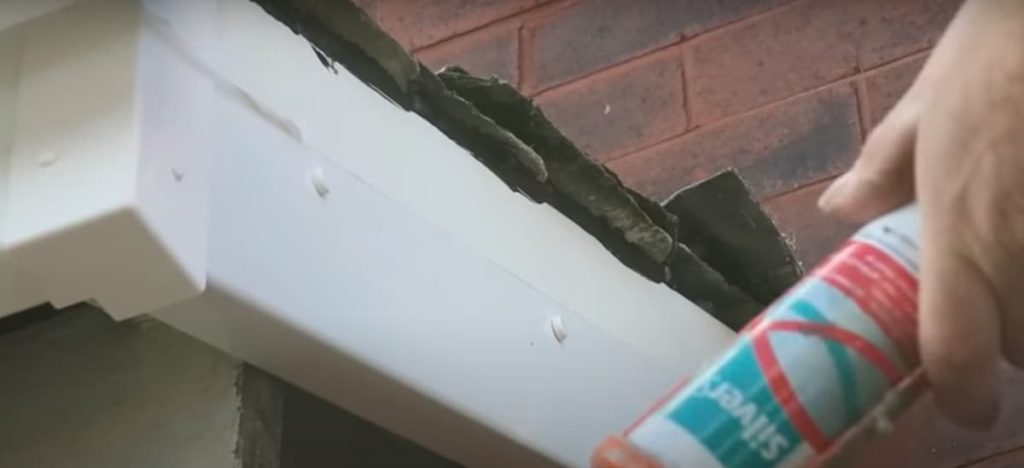
Why use Fascia (or not)?
Most people install gutters because they think they will debris from entering them, which they will (to a degree) but the debris will still sit at the bottom and decompose, this can be prevented by installing metal/plastic mesh inside gutters which is an additional expense.
Fascia prevents debris from entering the roof system as it goes over the top of your gutter and stops everything that’s thrown into it. This way you don’t have to worry about debris moving towards your guttering and causing blockages. It can also cover up house wrap or any other structural barrier so using them together is beneficial.
It all comes down to how much time, money and effort you want to spend on protecting your roof and fascia or gutters are both effective methods, there really isn’t a “best” option.
So when it comes to your home, remember that they both serve different purposes and can be used together.
Gutters vs Fascia
Fascia boards are integral parts of most roofs sitting on top of rafters or trusses. They are usually made of wood or vinyl and form an attractive cover for your eaves. A fascia covers the gap between the roof sheathing (plywood, OSB, etc.) and the gutter/soffit material (aluminium, steel, wood). On some homes, there may be only soffit vents but no fascia board, this makes for a slightly different problem to deal with because water can run down behind siding or soffits.
If your fascia boards are made of wood, they will rot over time. It’s not the water that causes this damage but the wet organic debris (leaves, twigs, seeds) that falls into the space between the fascia and wall cladding. If you have aluminium fascia boards then they won’t rot, but keep in mind that if water stands on them long enough it can cause discolouration. These types of metal roofing panels are painted for this reason to protect them from rust stains due to water absorption…
The easiest way to tell whether your home has gutters versus a fascia is to look at your house from ground level. If you see downspouts, then that’s your gutter system, you don’t have fascias on your roof.
If you don’t have any gutters, whether aluminium or metal, but there are tall drip edges near the ground level of your home, then these are called soffit/eaves vents. Make sure they are free of debris to ensure proper airflow. The primary purpose for soffit/eaves vents is to allow moisture out of the attic, keeping it dryer and reducing the chance of ice dams in colder climates.
Fascia can be installed flush with house cladding (siding) or slightly recessed 2-3 inches below siding for weather protection if desired). It will also cover the gap between the cladding and the gutter/soffit material.
Difference Between Fascia and Guttering
Fascias “wrap around” the roof sheets and roof rafters, protecting them from sun and weather. They are usually made of wood (fibre cement is another option) but may be vinyl.
Gutters go on the outsides of house walls, overlapping one course of cladding (siding) or two courses when installed over brick or horizontal lap siding. They catch and carry water from roof downspouts to a splash block at the base of the wall or into a yard drain.
There is a lot of confusion in chasing up quotes for fascia boards versus gutters. The writer has been told that they are installed one above the other, they overlap one another and there are no problems with this.
How they are installed depends on the roofline and homeowner, but often guttering is fitted at the bottom of a slope and fascia boards run below it. Fascias are really sheds covered by cladding, they can be wood or metal soffits which you see in most new homes, but there are different options for an older home.
A fascia is usually designed for installation as a cover on the gap between the roof sheathing (plywood, OSB, etc.) and the gutter/soffit material (aluminium or steel). On some homes, there is only soffit venting but no fascia, this makes for a slightly different problem to deal with because water can run down behind siding or soffits. If the fascia board is made of wood it will rot over time, not because of water damage but due to wet organic debris (leaves, twigs, seeds) falling into the space between the fascia board and wall cladding. Aluminium fascia boards won’t rot but may discolour if water stands on them long enough to be absorbed. These metal roofing panels are painted for this reason.
The easiest way to tell whether your home has gutters versus a fascia is to look at your house from ground level. They only have downpipes at the corners and visible guttering is usually a sign you have gutters.
Best Roofing Materials
Gutters: Steel and aluminium (galvanised or recycled material)
Fascia: Wood, vinyl/composite, aluminium or steel (flat or corrugated)
Soffit/eaves vents: Vinyl. If you have aluminium, gutters may be installed over them or they may be cut away.
If you don’t have any gutters, whether aluminium or metal, but there are tall drip edges near the ground level of your home, then these are called soffit/eaves vents. Make sure they are free of debris to ensure proper air circulation. The primary purpose for soffit/eaves vents is to allow moisture out of the attic, keeping it dryer and reducing the chance of ice dams in colder climates.
What is a Soffit?
A soffit is the underside of an overhanging roof eave. It provides a transition to the outside building envelope and can be used for recessed lighting and ventilation. A soffit also hides exposed ductwork or air conditioning vents that would otherwise break up the symmetrical look of traditional facades.
In many parts of Canada, a fascia board is not necessary. The guttering system itself acts as the protective barrier between the cladding and roofing sheets/rafters. In other words, there is no ‘gap’ on the roof to be covered by a fascia. However, in some cases, I have seen that the builders chose to add a fascia board to protect the guttering from direct contact with sun and weather, but this is rare.
The Difference Between a Fascia and a Soffit
In general, a fascia board covers the roof sheathing on one side of the wall. The bottom edge of the fascia is nailed to horizontal blocking or an intermediate rafter. It then extends across the wall’s entire front, sloping downward at about 10 degrees from horizontal. The bottom of the fascia board overlaps or hangs over the front edge of the eave (the outside wall below the roof overhang).
Fascia boards are often installed at the bottom of a roof to cover the gap between the roof sheathing and any exterior cladding. The fascia can be made of wood, vinyl/composite, aluminium or steel (flat or corrugated).
A soffit is the underside of an overhanging roof eave. It provides a transition to the outside building envelope and can be used for recessed lighting and ventilation. A soffit also hides exposed ductwork or air conditioning vents that would otherwise break up the symmetrical look of traditional facades.
The bottom edge of a soffit is nailed to the wall or some kind of permanent framing. It doesn’t run across the entire front of a wall, instead, it ends where it meets up with another piece of permanent framing.
Colorbond Roofing
Colorbond roofing is made of steel, which means it won’t rot. But if it sits long enough, wet organic debris (leaves, twigs, seeds) can eventually stain the aluminium Colorbond panels. If water stands on the panels for long enough to be absorbed, the aluminium will eventually discolour.
Aluminium roof sheeting is painted for this purpose. So if your Colorbond roof needs repainting you can either hire a professional or do it yourself with acrylic paint specifically designed for high-temperature surfaces (don’t use latex). If you hire a professional, they will sand down the surface first to remove any loose paint.


